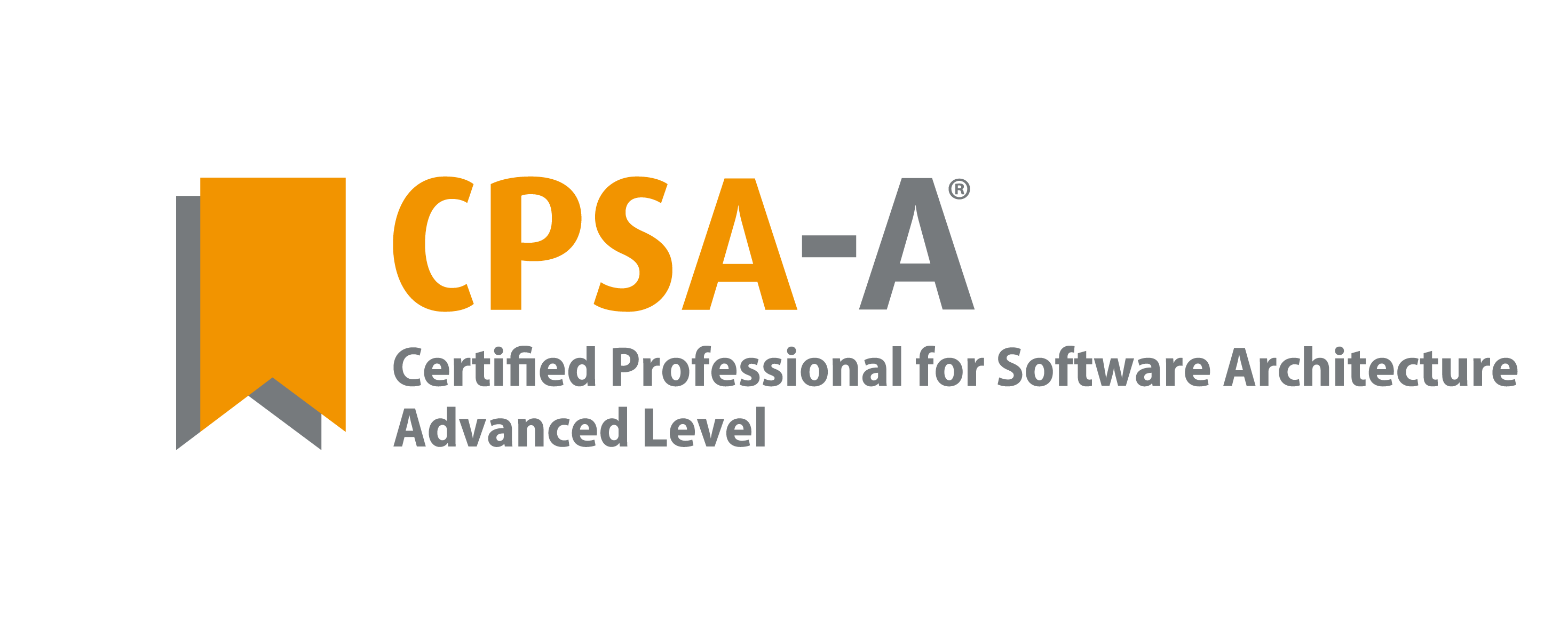
Description
Participer au cours iSAQB® CPSA-A Enterprise Architecture Management (EAM) permet d’obtenir 30 points de Compétence Méthodologique (MC) pour atteindre les 70 points requis afin d’être éligible pour passer l’examen iSAQB CPSA-A avec Brightest. Il est important de se rappeler que dans le cadre des 70 points nécessaires pour passer l’examen iSAQB CPSA-A avec Brightest, il faut disposer d’au moins dix points de compétence dans chacun des domaines suivants :
- Compétence Technique (TC)
- Compétence Méthodologique (MC)
- Compétence Communicationnelle (CC)
La formation accréditée iSAQB® EAM - Enterprise Architecture Management (CPSA-A) est basée sur le programme iSAQB® actuel :
Partie 1 - Concepts de base de l’EAM (Enterprise Architecture Management)
- Identifier et expliquer les missions, objectifs et bénéfices de l’EAM ; interaction entre la stratégie (IT) et l’EAM
- Expliquer la différence entre EAM et E(IT)AM
- Expliquer et guider l’évaluation d’un portefeuille d’applications
- Citer et décrire les tâches et défis de la gouvernance
- Citer et décrire les exigences pour les outils EAM
Partie 2 - Procédures de l’EAM
- Présenter et expliquer le processus de formulation d’une vision architecturale
- Présentation et explication de l’analyse de l’architecture existante
- Présenter et expliquer l’élaboration de l’architecture cible
- Expliquer les principes d’entreprise dans l’architecture d’entreprise et comment les mettre en œuvre
- Présentation et explication de l’importance de l’architecture d’entreprise comme cadre réglementaire pour les stratégies IT
- Gestion et évaluation des projets de mise en œuvre
Partie 3 - Référentiels et métamodèles
- Métamodèle d’architecture
- Définir les limites entre différents types d’informations
- Présentation et explication de l’utilisation et de la gestion d’un référentiel EAM
- Identifier et expliquer la définition et l’utilisation des architectures de référence
Partie 4 - Gouvernance et gestion du changement
- Identifier et décrire les rôles de la gouvernance IT
- Présenter et expliquer la fonction, les tâches et la composition des conseils de direction
- Identifier et décrire les modèles organisationnels pour la gouvernance IT
- Identifier la différence entre bonnes pratiques, directives architecturales et principes
- Citer et décrire les tâches d’un audit de gouvernance en utilisant COBIT
- Présenter et expliquer COBIT
- Objectifs et bénéfices de COBIT
- Présenter et expliquer les principes fondamentaux de gouvernance de COBIT
Partie 5 - Mise en place de l’EAM
- Présenter et expliquer les principales portes d’entrée pour un EAM
- Promotion et optimisation de l’EAM au sein de l’organisation
- Communiquer l’objectif et les bénéfices de la mise en place d’un EAM aux parties prenantes
- Voies de migration pour introduire un EAM dans un paysage IT existant
- Définir les limites
- Définir les limites lors de l’introduction d’un EAM dans un environnement IT existant
Partie 6 - Cadres d’architecture d’entreprise
- Identifier et expliquer les exigences et les bénéfices d’un cadre d’architecture d’entreprise
- Citer et expliquer la différence entre les différents types de cadres architecturaux
- TOGAF
Public cible
La formation CPSA-A sur la gestion de l'architecture d'entreprise est particulièrement pertinent pour les personnes qui souhaitent mieux comprendre comment gérer la cohérence entre des systèmes informatiques et des environnements applicatifs complexes.
Conditions requises
Pour participer à un cours iSAQB® CPSA – Niveau Avancé, vous devez être titulaire du certificat iSAQB® Certified Professional for Software Architecture – Foundation Level (CPSA-F).
Pré-requis en termes de connaissances :
Les personnes participantes doivent avoir les connaissances préalables suivantes :
- Principes fondamentaux du développement de l’architecture : importance et délimitation de l’architecture, procédures, influences et exigences, décisions architecturales, modèles et documentation avec vues, tels qu’enseignés au niveau de base CPSA-F.
Des connaissances dans les domaines suivants peuvent faciliter la compréhension de certains concepts abordés dans ce cours :
- Expérience pratique dans le domaine de l’architecture et compréhension d’au moins une technologie ou plateforme moderne pour le développement d’applications distribuées
- Connaissance des défis typiques liés aux architectures d’entreprise :
- Définition des objectifs d’entreprise (IT)
- Planification stratégique (IT)
- Gestion de portefeuille (IT)
- Application Lifecycle Management (gestion du cycle de vie des applications)
Les programmes d'étude et les exemples d'examens seront bientôt disponibles !
Les programmes d'étude et les exemples d'examens seront bientôt disponibles !